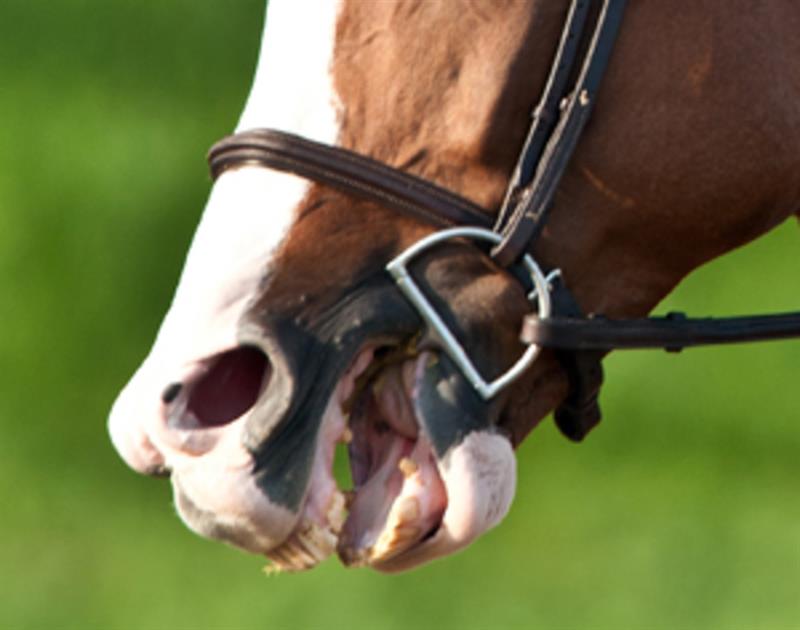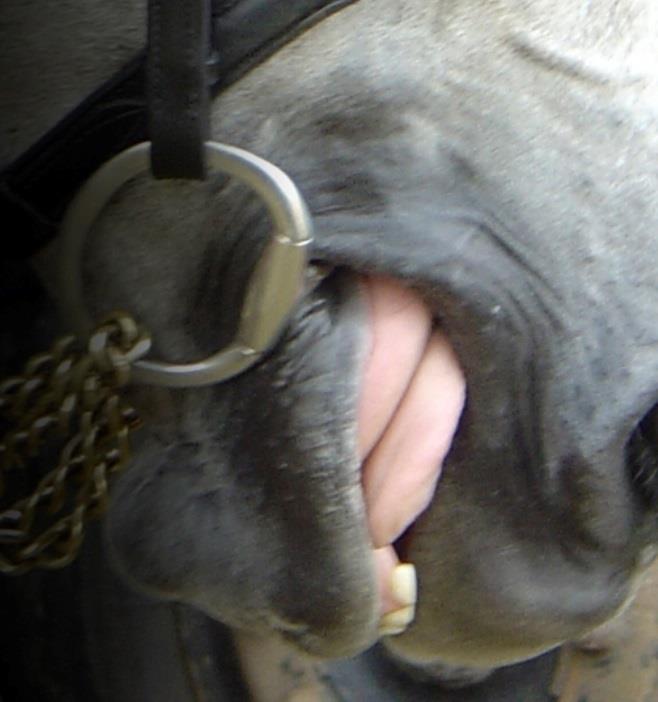Last May, Ema Odlin-Baxter - Senior Bitting Specialist and Lecturer from The Horsebit Shop supplied this expert advice on bits and bitting. As the competition season gets under way, we re-visit her article.
Over the years the world of equestrianism develops like everything else in life. New technology comes along and our knowledge base grows, trends take a hold and fashions become the law, but when it comes to looking at the bitting aspect of our equine counterpart should this follow suit?
Having now worked solely in the world of lorinery, the fancy name given to us few anoraks that occupy our times with playing with bits and metal components dedicated to the equine world, I can assure you there is a lot more to it than ‘if it fits then it does the job’. Did you know that a bit you use in your horse is very much like having your very own golf club? Each individual driver or rider will all have their own unique style which is developed from strength, flexibility, experience and the level of response from the horse. Now combine this with each horse having its own strength, flexibility, experience and of course response from the rider or driver... And then hey presto it just got complicated and we begin to try and do a jigsaw that we don’t know what the picture is!
Whilst bitting a horse for riding is fundamental, the need for correct bitting in carriage driving is actually much greater. Okay, so I heard you… “Poppy cock”… allow me to explain.
The bit itself is a vital communication tool between us and the horse. For a ridden horse we then have in addition to this our seat and leg aids, clearly not something we have in driving. Every bit that we put in a horse’s mouth is only capable of producing one of two things, Relaxation and evasion. If the bit is encouraging the horse to evade, then we lose a clear communication as he is more focussed on the discomfort that he is feeling in and around his mouth particularly over the tongue. The horse’s tongue whilst being the strongest muscle in the body is also the most sensitive too. Fastened to the sternum, any tension in the tongue as the horse evades can cause the horse to be ‘stiff’ in the neck and therefore lose flexion making the horse behave more ‘wooden’ and ‘mechanical’, not good particularly in the dressage discipline.
For those of you who dare to delve into the world of interchanging bits, you will have already seen that there are literally thousands of different styles of bit, thousands of cheek pieces and many more types of mouthpieces. Over the past decade these are increasing drastically and this is not down to bit fitting being trendy, nor is it that manufacturers are jumping on a sales bandwagon, it is down to the horses’ conformation that is changing.
When selecting the right bit we look at several aspects to get the right one and unlike a harness where the traces are either, in the right place and right length or not, the bit choice is determined by mouth conformation, size of tongue, length of lip and the mind-set of the horse to name just a few. In today’s breeding patterns we are producing horses that are much more animated and much hotter than before. With this we are seeing that horses’ mouths are becoming much fleshier with much bigger tongues that are far more sensitive thus creating a need for more educated decisions when it comes to bit choices.
If we then combine each individual horses’ needs with the demands of driving horses in teams the consideration is not only multiplied by the number of horses; for example times two for a pair, but also the addition of the need to run one in the wheel on the left for example. The method and choice of bit we use can help with a horse that would pull to the left or would generally set a slightly faster pace than his team mates.
So what about bits themselves… Going back a few years we mainly focussed on the likes of Liverpools, Buxtons and Wilsons as being the ‘only’ bits to drive in, times have drastically changed. It is not unusual to now see the demand for snaffles and hanging cheeks for driving due to the increase in mouth sensitivity as the likes of a the Mullen Liverpool being too harsh and applying too much tongue pressure which is one of the main reasons for a horse trying to draw its tongue over the bit or opening the mouth. We will always find ourselves using slightly ‘stronger’ bits for driving to riding due to the length of the reins that we use, as the signal is then diluted slightly by the distance it travels from the hand to horse’s mouth. We also have to take on board the angle in which we are using the rein. In a ridden situation regardless of the height or breed of the horse, the rein will always lift the bit through 45 degrees as we pick up a contact. In driving, this can vary depending on the type of carriage used, the height of the horse, breed and the interference from the terrets, that whilst its purpose is to stop the reins snagging can still change the direction of the contact thus determining what angle of mouthpiece would be most successful to gain the best acceptance from the horse.
One of the typical signs that suggest we need to look for a new bit is tongue evasion, which can show itself by the horse putting the tongue over the bit or sticking the tongue out to the side. This is the horse’s way of alleviating tongue pressure, an issue we often correct by creating tongue relief in the form of gently curved ports, anatomically shaped mouthpieces and even in some cases the introduction of a double broken bit with a lozenge of peanut style. In addition to this, particularly for driving we tend to add to the three or two piece style bits a ‘locking’ action that then prevents the bit being able to collapse right back giving unnecessary pressure on the lip but more importantly the rigidity once the bit locks adds control and steering properties without compromising flexion and a relaxed contact for the horse then allowing him to move forward freely.


Above: A typical images of tongue evasion
When trying new bits we always advise that it is down to the horse to choose the right mouthpiece as there will be certain points in the mouth that are more vulnerable than others which can be completely different from horse to horse. For example a horse with a large tongue that is relatively sensitive across the bar area but has a low palate may have an objection to a wide, high ported mouthpiece. So in this case anatomically shaped tends to be more successful.
Once this is established we then get to have our say by amending the cheek choice to suit what we are looking for. Our clients that have traditional driving teams used for commercial purposes such as weddings, funerals etc. Have a need for all horses to be presented in more traditional looking bits and of course all must match.
On the other hand we have competition driving clients that are looking for faster turns through cones, or sharper paces with rounder outlines for dressage all of which can be improved by the use of a more modern cheek style such as a Baucher or even a 2.5 ring loose lever snaffle.
Confused still? Well if I have blown your mind we run a bitting advice and bit trialling centre where we have bitting specialists that can advise you on bits to try and help with any bitting problems. You can find us at www.thehorsebitshop.com or on 01405 861800. We also run bitting clinics and email advising service by emailing info@thehorsebitshop.com
First published in Carriage Driving - May 2018
